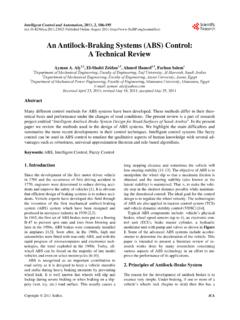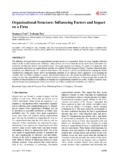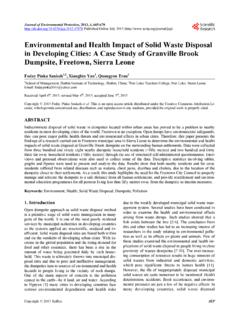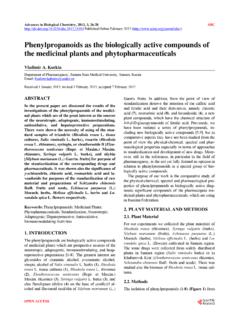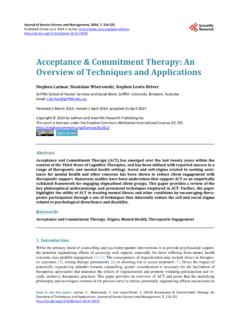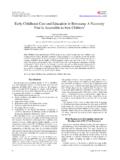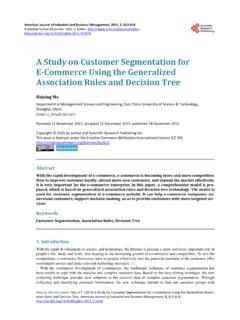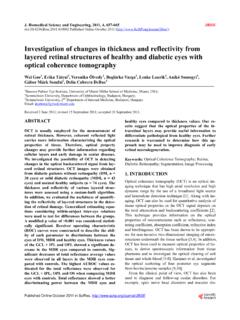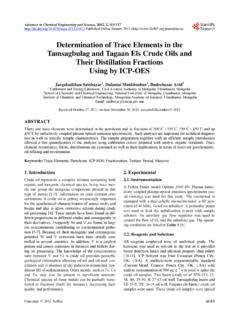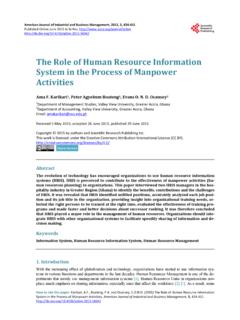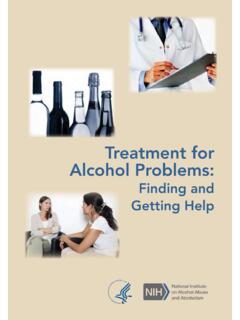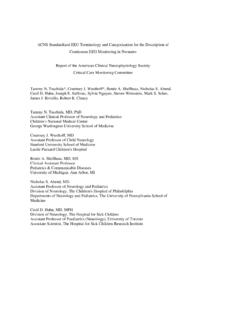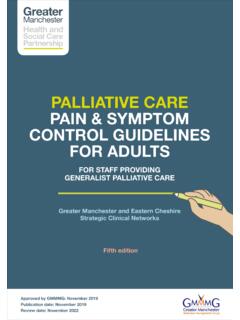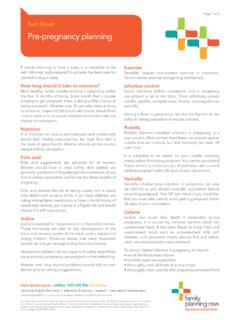Transcription of Management of Epileptic Patients in Dentistry
1 Surgical Science, 2012, 3, 47-52 Published Online January 2012 ( ) Management of Epileptic Patients in Dentistry Yalt r k Mehmet1, zer Senem1, Tongu S l n2, Kocaelli H meyra1 1 Department of Oral Surgery, Faculty of Dentistry , Istanbul University, Istanbul, Turkey 2 Department of Prosthodontics, Faculty of Dentistry , Istanbul University, Istanbul, Turkey Email: {myaltrk, tongucsulun, Received June 9, 2011; revised September 23, 2011; accepted October 13, 2011 ABSTRACT Epilepsy has direct negative effects on sufferers general dental condition and oral health, both of which are further af-fected by inadequate oral hygiene; poor oral hygiene itself is often also caused by epilepsy-related poor health.}
2 Conse-quently, tooth loss, caries and periodontal disease occur increasingly often in epilepsy sufferers and they need more dental treatment. However, in fact the Epileptic Patients can receive fewer and simpler treatment modalities. The aim of this study was to review and synthesize recent studies on dental treatment in epilepsy Patients and to mention potential triggers for seizures in dental practice. Keywords: Epilepsy; Dental; Seizure; Prosthodontic Treatment 1. Introduction The human brain consists of millions of neurons, their extensions, and the supportive tissues found between those neurons.
3 All brain cells have the ability to produce electrical currents and conduct them to other cells. It is by transmitting such electrical signals that the brain func-tions. In other words, it is the conduction of these elec-trical currents that enables us to act, to speak and to feel [1,2]. Seizures can be defined as the discontinuity of normal brain functions due to sudden electrical discharges which may be either excessive or inadequate; these result in episodic convulsions (such as involuntary motion), dis-turbances in perception, or alterations in consciousness.
4 The outcome of such excessive discharge during electri-cal conduction is called seizure [2-4]. Epilepsy is a disease that involves seizures which are characterized by an alteration of perception, behavior and mental activities, as well as by involuntary muscle con-tractions, temporary loss of consciousness and chronic changes in neurological functions that result from ab-normal electrical activity in the brain [3,5,6]. Epileptic seizures are reversible and recur frequently [2]. For centuries epilepsy was thought to be a disease re-lated to the supernatural.
5 Although Hippocrates claimed that epilepsy is a naturally occurring disease, the misbe-lieve that the cause of epilepsy was supernatural was common until the neuropathologic origin of epilepsy was reported in the 19th century [7]. In the early part of that century, John Hughlings Jackson defined Jocksonian seizures; in the middle of the 19th century, Robert Bently Todd defined the paralyses that may develop after long- term seizures [2]. Today, the diagnosis of an Epileptic patient required at least three seizure episodes [1].
6 The aim of this study was to review and synthesize recent studies on dental treatment in epilepsy Patients and outline the special concerns that dentists should take into account when providing care to these Patients . We searched the dental literature with Medline/Pub- med with an emphasis on peer-reviewed journals and Science Citation Index Expanded. Key words used were epilepsy, dental, seizure and prosthodontic treatment. We also scrutinized common textbooks on removable and fixed proshodontics. For additional information a hand search from relevant data were searched, too.
7 2. Epidemiology and Prevalence Epilepsy is a disease that is frequently encountered by oral and maxillofacial surgery practices [2]. It is thought to affect millions of people worldwide, and has a preva-lence of - in the general population [1,2,8]. Chapman et al. have reported that, Epileptic seizures are the second most common medical incident in dental sur-geries. They have stated that statistically every dentist notice in his/her professional life times generalized tonic-clonic seizures by the Patients [9]. It has been reported that the disease occurs independ-ent of race, age and gender [2,10].
8 However, epilepsy has been occur more frequently in men than in women [2,5, 10,11]. Epilepsy has been observed most frequently in chil-dren under 1 year of age and in people over the age of 75 Copyright 2012 SciRes. SS Y. MEHMET ET AL. 48 [2,10,11]. It has also been reported that those cases of epilepsy that develop in childhood are genetic in origin, while those that appear in adulthood are related to cere-brovascular diseases [2,10].
9 Up to 50% of children dis-playing mental retardation have been diagnosed as suf-fering from epilepsy [4,10,11]. Etiology In 70% of epilepsy cases, the specific etiology is not known for certain. These cases are defined as idiopathic or primary epilepsy. When the etiology of seizures is known, the condition is known as secondary or acquired epilepsy [2,10,11]. Secondary epilepsies are the result of metabolic, ge-netic, structural or functional anomalies [2]. Examples of metabolic disorders related with epilepsy are electrolyte imbalance, acidosis, hyperglycemia, hypoglycemia, hy-poxia, dehydration, water intoxication [2,10,11].
10 Exam-ples of systemic disorders that cause seizures are sepsis, systemic lupus erythematosus, hypertension and diabetes [2]. Other causes of epilepsy are cerebral vascular mal-formations, brain tumors and hamartomas, hypocsic- ischemic lesions, head traumas, birth traumas, infections affecting babies during pregnancy, inflammatory dis-eases and infectious diseases [2]. Seizures can also be associated with West Syndrome, Lennox-Gastaut Syn-drome and Landau Kleffner Syndrome [2,12,13]. There are also some case reports of reflex Epileptic seizures caused by prolonged brushing of teeth [14-17].
